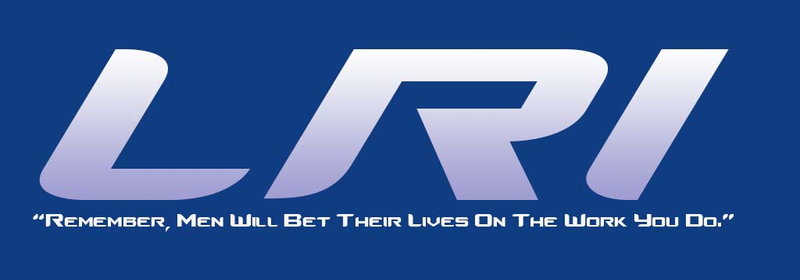LRI's 2.4ULTACH Installation.
Posted by Chad Dixon on
Thought I'd take a moment and share just what it takes to install a cheek piece on a composite stock. The popularity of our 2.4ULTACH (Ultra Light Titanium Aluminum Cheek Hardware) is high. Almost every rifle we build uses one. In stocks like the "A" series from Manner's Composites it's a slam dunk as the stock/cheek hardware are made as two separate components.
Things become more interesting once were commissioned to make this modification on a conventional stock. The first challenge is bringing the part to a level where we can even install the hardware. Just cutting the cheek piece with a saw won't do it as almost every stock uses an expandable foam core in this region. The core is light and help supports the sidewalls of the back end. What it does not do however is offer any kind of structural foundation for the hardware to attach to.

One could cut it, gut the filler, and then reapply, however it is a tremendous amount of work to bring the two parts into a well fitting assembly.
When possible we will remove the recoil pad or start with a raw blank not yet fitted with a pad and "gut" the foam core with a long reach aluminum cylinder head porting burr. This is the perfect tool for breaking up the foam and removing it. It also scuffs the interior walls of the cavity so that the filler has a good surface to bond to.
From here, we'll mix up a batch of filler, pour it in, and wait for it to cure. It's been done this way for years. The conventional path at this point is to saw cut the cheek piece, install the hardware, and fit it all up. The problem is the core material is now exposed. The stock should really be capped off with glass or carbon like Manner's and McMillan do.

I absolutely dreaded installing hardware this way. It was always an absurd amount of manual labor and creating crisp/clean lines along the cut. It's a skillset I just don't have nor do I care to learn as I'm convinced I could never get it as good as a truly machined feature.
-So I automated it. (to some degree)
I've altered some small diameter endmills and we've built the work holding to be able to machine the cheek piece from the stock. From here the two parts are then laid up with glass cloth. This serves two purposes. It caps off the exposed core material and acts as a "filler" to close the gap left from the "curf" of the tool. Were not sawing it. It's done with a very small endmill.

The result is a nice clean surface that has the structural strength of a stock ordered this way.
The caveat is a paint job as the work is still invasive and involves a great deal of hand work to blend all the features into a presentable part.
The photos illustrate a stock that I finished today and one were about to start on.
The green Manner's T4 was one where we decided to leave the recoil pad installed. The pads are expensive to replace and because its glued on, there's no good way to remove it without ruining it. Instead we poked a couple holes in the stock and removed the core material. From there we literally pumped in the filler material. I made a pneumatically driven cylinder to push the filler into the cavity. We capped off one of the holes with a patch of carbon fiber and allowed the filler to "balloon" this piece into the void. It worked well and only required a little blending with epoxy filler once it cured.
Once cured our work rewarded us with a strong core.


Share this post
0 comment

